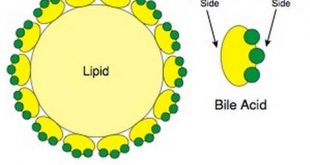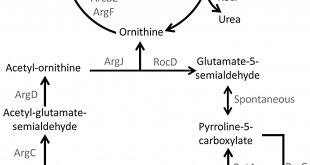A model organism is a nonhuman species that is used as a framework to develop and standardize the analysis which is applicable to other species. It’s an in vivo model which is extensively used to study human diseases when human experimentation would be unethical. In studying human diseases, model organisms …
Read More »TimeLine Layout
May, 2019
-
22 May
GMO: A Blessing or A Curse?
What is GMO? A Genetically Modified Organism (GMO) is an organism whose genetic materials has been altered using genetic engineering techniques. A GMO is the result of a laboratory process where genes from the DNA of one species are extracted and artificially forced into the genes of an unrelated plant …
Read More » -
17 May
The Lipid
Lipids are a heterogeneous group of compounds that are related to fatty acids. They are usually esters of fatty acids with alcohols. Examples include fats, oils, waxes, and other substances. Fats (solid) and oils (liquid) = Glycerol (tri-hydroxy alcohol) + 3 fatty acids. Wax = Mono-hydroxyl alcohol + Fatty acid. …
Read More » -
17 May
The GRE General Test: A Stairway to Higher Study
GRE stands for Graduate Record Examination. If you are planning on getting yourself in a graduate school (doing your master’s) in mostly USA, you may need a GRE score to apply. It is the most common entrance exam and the largest assessment program for your graduate admission and students from …
Read More » -
16 May
Rhizoid and Rhizomorph: Awww it seems confusing!
Rhizoid and rhizomorphs are two common terms used in the study of fungi. Both of them are derived from the same word root. But still they maintain some differences. Rhizoid The name ‘Rhizoid’ is derived from the Latin prefix ‘rhizo’ – which means root. But it is not a root …
Read More » -
16 May
Endosymbiosis in Plant Sap-Feeding Insects (Part-2)
The vast majority of observed plant sap-feeding hemipterans colonized by primary symbionts are defined by three traits. First of all, phylogenetically as they are universally present in the host species, have much-reduced genomes and have evolved from multiple phylogenetic origins such as Alphaproteobacteria, Betaproteobacteria and Gammaproteobacteria, and Bacteroidetes. Secondly, they …
Read More » -
7 May
Introduction to Fatty acids
Fatty acid is an important constituent of fat and is the derivatives of hydrocarbon. It is a carboxylic acid (-COOH) with a long aliphatic chain, which is either saturated or unsaturated. Some fatty acids may have hydroxyl group in its chain (hydroxy fatty acids) and still others may possess ring …
Read More » -
6 May
Different Diseases of Jute: The Challenges for Jute Cultivation
Jute is a long shiny vegetable fibre that can be spun into coarse strong threads. India, China and Bangladesh are three major producers in the cultivation or production of jute fibre. Before understanding the diseases, lets know different parts of a jute plant so that we can understand where to …
Read More » -
1 May
The Selfish Gene: The Mean of Existence
Part-1 This is more of a book review than just an article sharing including intuitive visualizations from the other sources related to “The Selfish Gene” (1976) on evolutionary biology by the evangelist of biological science Richard Dawkins. Unfortunately, this book wasn’t too popular from the day of it’s publications because …
Read More »
April, 2019
-
29 April
Classification of protein: A Short Tour Through The World of Protein
Proteins are the most abundant macro-molecules, occurring in each cell and each part of a cell. They are generally formed by one or more long chain(s) of amino acid residues. Classification of protein 1) Based on source There are two types of protein. a) Animal protein: They are derived from …
Read More »
 Plantlet The Blogging Platform of Department of Botany, University of Dhaka
Plantlet The Blogging Platform of Department of Botany, University of Dhaka









